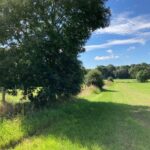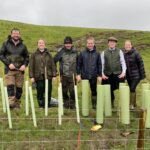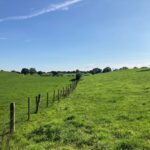Hedge Restoration Project, Crewe Estate, Cheshire
Following the success of a similar project on the Whitewell Estate in Lancashire, the Duchy has begun work to restore almost four kilometres of hedgerows across its Crewe Estate in Cheshire. The work focuses primarily on the ‘gapping up’ of existing hedges, supplemented by the planting of new ones and the incorporate of in-hedge trees. The objective is to complement the natural landscape and character of the estate while also providing protected habitats for species of insects, birds and small mammals such as hedgehogs in the borders and margins of our farmland.
Using the comprehensive biodiversity audit carried out across the estate by the Game and Wildlife Conservation Trust (GWCT) in association with Natural England in 2016, the team first undertook a survey of the estate’s existing hedges. This identified fourteen hedges as requiring attention, with a further thirteen specified by our tenants and team of rural surveyors as needing additional restoration.
As in Whitewell, we are working with our tenants and forestry consultants to deliver the project, under the guidance of His Majesty The King’s Head Forester, Geraint Richards. Geraint, who started his career with the Forestry Commission before joining the Duchy of Cornwall in 1996, has advised on both the hedge mix and the species of trees to be planted to ensure that the project reflects and enhances the local landscape.
Commenting on the initiative, Head of Rural Investment, Mark Coombs said: “It is really important to improve the connection between the different habitats which exist across our farms and rural estates. If they remain unconnected, some habitats can become isolated, leading to a decline in biodiversity. Rich and varied hedgerows are a vital resource in combating any such decline because they act as ‘open corridors’, providing a safe habitat for wildlife to nest, breed, hibernate and travel, and offering a crucial food source during the winter months.”
The in-hedge trees will be a combination of oak, sycamore, lime and hornbeam, as well as bird cherry and field maple. Works have already begun and the project is due for completion before the end of January.


